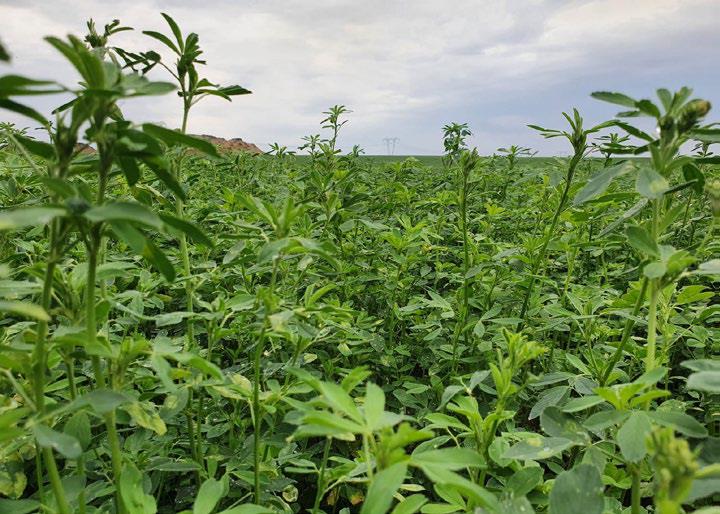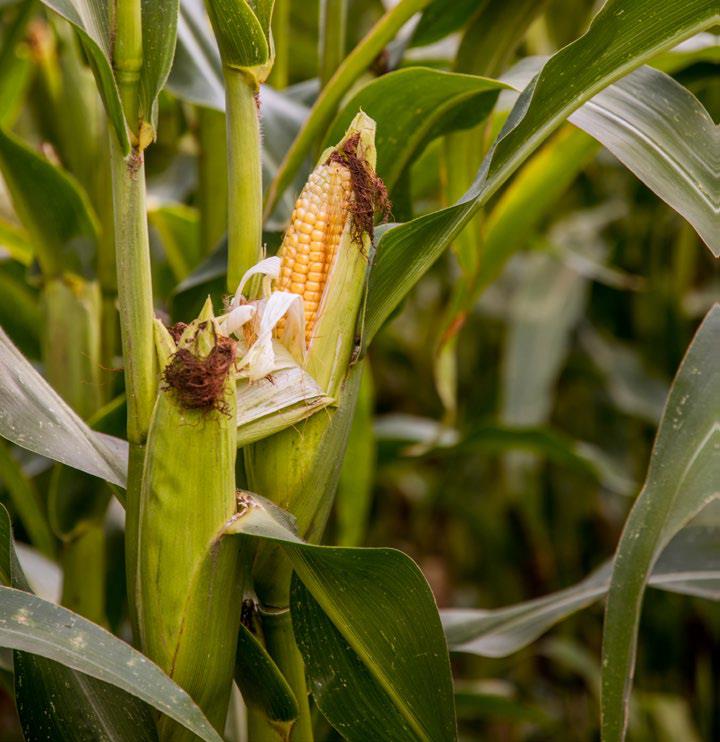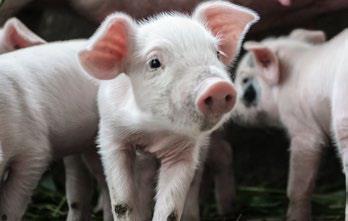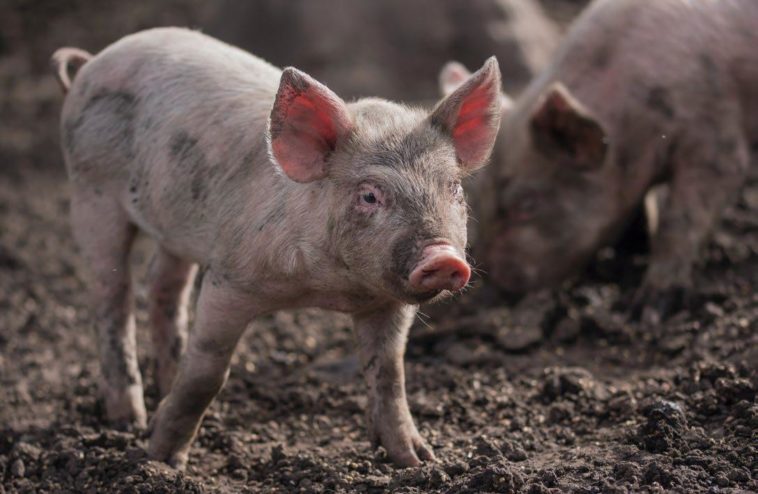Various feed sources can be used to make nutritious pig feed that will enable your pigs to grow and earn more profit. The composition of the feed is extremely important. Pigs, like people, need a balanced diet to remain healthy and grow effectively.
Grains
Grain constitutes between 55 and 70% of the total feed mixture. The grain in a mixture provides mainly energy (between 60 and 80% of the total DE (digestible energy) in the mixture). Although grain is mainly an energy source with a low protein content, it also contributes substantially (30 to 60%) to the protein content of the mixture.
Maize is used as a grain source in pig feeds because it is high in DE and low in protein, and therefore used mainly as an energy source. Grain sorghum has a nutritional value similar to that of maize. Provided that sweet sorghum (low tannin) varieties are used, sorghum can be substituted for maize on an equal basis in feed mixtures.
Feed-grade wheat, when available at a cost not exceeding 20% above that of maize, can also be used. The protein content of wheat is normally higher and the DE content lower than that of maize. Using wheat instead of maize in feed mixtures could lead to considerable savings in protein costs. Wheat must always be coarsely ground when used for feeding pigs.
Barley is included in some regions as a grain source. It has a higher fibre content and a lower digestible energy value than other grain types. Barley should not comprise more than 70% of the grain component of a mixture. Oats can be used, but not more than 40% should be included in mixtures for growing pigs, and 60% or less in mixtures for finishing pigs.

Sweet sorghum can be used as a substitute for maize in feed mixtures.
Grain by-products
Grain by-products such as wheat bran, maize bran, maize leaves, maize stalks, and maize cobs are used to dilute the DE content of the mixture. Brans have a protein content higher than that of grains, and are also relatively inexpensive. Wheat bran is the most popular DE diluent used in pig feeds. It is usually cost effective and has a laxative effect in pigs. When seasonal shortages occur, other diluents such as maize bran, maize leaves, maize stalks, maize cobs, and lucerne can be used.
Hominy chop, a by-product from the maize-milling industry, can be used when available at a reasonable price. It is a product that can vary a great deal in content and quality, depending on the miller it is bought from. It has a higher fat content than maize, and can be used as a partial replacement for maize.

Grain, and specifically maize, make up most of the composition of pig feed. Commercial pig farmers usually grow their own grain to convert into pig feed to limit the influence of high grain prices on their piggery.
Plant protein sources
Oilcake meals
Soya bean oilcake meal and sunflower oilcake meal are plant protein feedstuffs usually included in pig feed mixtures. Soya bean oilcake has a higher and better-quality protein, and contains considerably less fibre than sunflower oilcake.
Full-fat oilseeds
Full-fat soya bean and sunflower seed meals have a high oil content. The oil results in soft fat in pig carcasses.
Therefore, the inclusion of these two feedstuffs, if fed in combination with maize, must be limited in rations for finishing pigs. Full-fat soya beans must be heat treated before use to destroy the trypsin inhibitor, a substance which reduces the growth rate of pigs.
Lucerne
Lucerne is also used as a DE diluent in pig feed mixtures. It has a high fibre and low DE content. Therefore, the inclusion of lucerne in feed mixtures for pigs must be limited. Lucerne also varies much in composition depending on the growth stage when cut, and on the extent of leaf loss during drying and baling.
Animal protein sources
By-products of the animal and fishing industry can be used as animal protein sources for pigs.

Fish meal
Fish meal is the most frequently used and best protein source to include in feed mixtures. It also has a high DE content.
Blood meal and carcass meal
Blood meal has a very high nutritional value. Do not, however, use more than a maximum of 5% in feed mixtures because it is unpalatable. It becomes burnt easily during processing, which has a detrimental effect on the quality of the proteins.
Carcass meal can vary a great deal in composition and quality because manufacturers use different products and processing methods. Heat damage during processing can downgrade the quality of the proteins in carcass meal.
Calcium and phosphorus sources
Feed lime is a good calcium source and is not awfully expensive, but it contains no phosphate. Monocalcium phosphate, dicalcium phosphate and bone meal are usually included as sources of phosphate. These sources also contain calcium, but in smaller quantities than feed lime.
Waste products in pig feed mixtures
Waste products must be used with great caution in pig rations. Kitchen refuse and by-products from the bakery and other food-processing industries may contain toxic substances such as excessive quantities of salt and other additives which can be harmful to pigs. Even hard objects such as pieces of broken glass, which can injure the pigs, are sometimes found in waste products.
These products are generally high in moisture (water) content and therefore have a very low nutritional value when fed in a wet form. Only use waste products in an air-dry form. Use a flat cemented area in the sun for drying the waste. Remove any undesirable material from the waste when it is spread out on the cemented area. After drying, grind the waste in a hammer mill. The milled meal can then be used to replace part of the maize meal when mixing pig rations.
Before using the waste product meal, it is advisable to have it analysed for protein, fat, fibre, calcium, and phosphate content by an analytical laboratory. Thereafter it is important to get the advice of a pig nutritionist on how much of the dried waste meal must be included in a pig ration.
We thank the ARC Agricultural Engineering South Africa for sharing this information with the readers of ProAgri BNZ. For further information visit www.arc.agric.za.









